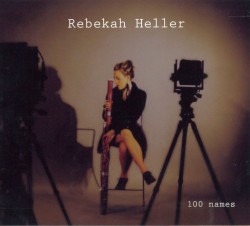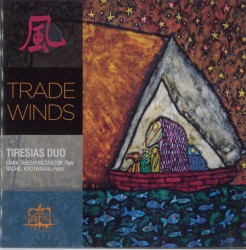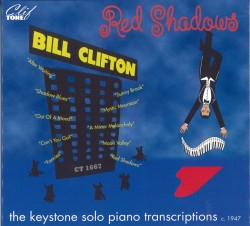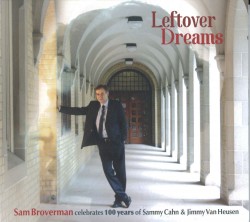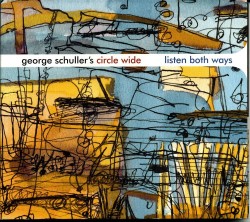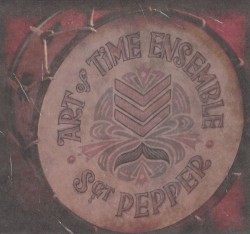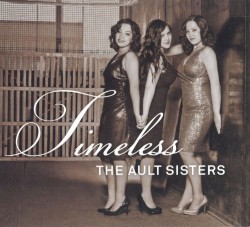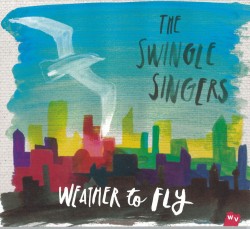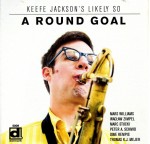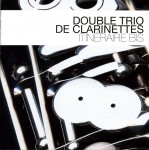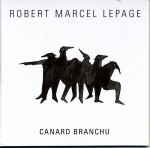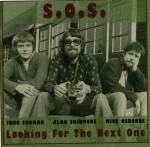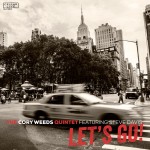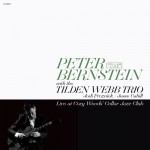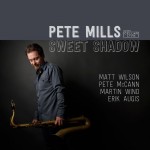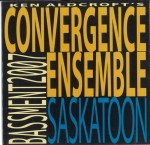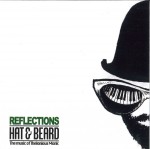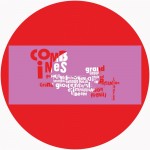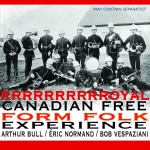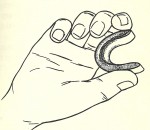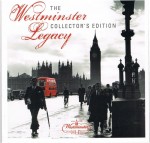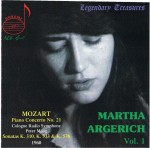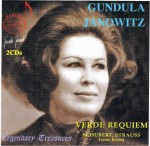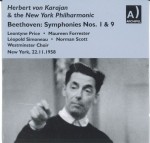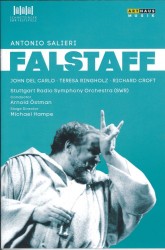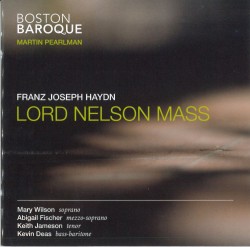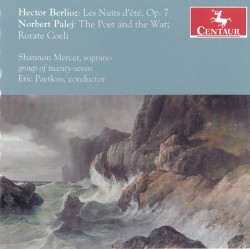 Since coming across bass-baritone José Van Dam’s recording of Les nuits d’été by Hector Berlioz while working at CJRT-FM some years ago, this has been one of my favourite song cycles. The setting of six songs on texts of Théophile Gautier, originally written for tenor or mezzo-soprano with piano accompaniment, was one that Berlioz returned to time and again over more than a dozen years, eventually providing versions for baritone, contralto and soprano and in 1856 completing an orchestral accompaniment. It is in this arrangement that we most often hear it and that is the case with a recent Centaur recording (CRC 3239) featuring soprano Shannon Mercer and Toronto’s group of twenty-seven (groupof27.com) led by Eric Paetkau. Gautier’s poems are selected from La Comédie de la mort and deal with death, love and longing. The well-crafted songs work wonderfully in every vocal range and Mercer is in superb voice, catching every nuance in this live recording from Grace Church on-the-Hill from April 1, 2011. Berlioz’ cycle is complemented by a set of five songs by Polish composer Norbert Palej who has been assistant professor of composition at the University of Toronto since completing his doctorate at Cornell in 2008. He is the director of the University’s gamUT contemporary music ensemble and of the annual New Music Festival that takes place at the Faculty of Music January 25 through February 2 this year. Palej uses his own English translations of poems by Krzysztof Kamil Baczyński, a leading member of Poland’s so-called Generation of Columbuses who was shot and killed at the age of 23 while fighting the Nazis in the Warsaw Uprising of 1944. The poetic fragments – From here…, Sparrows, Dark Lullaby, Hangmen’s Ballad and White Magic – are powerfully moving and effectively set, perhaps most so the final lyric which portrays the poet’s wife (who, pregnant with his child, was killed in an explosion a few days after Baczyński’s death). Once again, Mercer is in fine form. The disc concludes with Palej’s work for string orchestra, Rorate Coeli, inspired by a poem of the same name by Baczyński. After a tempestuous opening the tension relaxes into luscious and haunting melodic textures that eventually die away, reflecting the poem’s final lines “At night – may it grow like a column of grass, At night – let it be night eternal.”
Since coming across bass-baritone José Van Dam’s recording of Les nuits d’été by Hector Berlioz while working at CJRT-FM some years ago, this has been one of my favourite song cycles. The setting of six songs on texts of Théophile Gautier, originally written for tenor or mezzo-soprano with piano accompaniment, was one that Berlioz returned to time and again over more than a dozen years, eventually providing versions for baritone, contralto and soprano and in 1856 completing an orchestral accompaniment. It is in this arrangement that we most often hear it and that is the case with a recent Centaur recording (CRC 3239) featuring soprano Shannon Mercer and Toronto’s group of twenty-seven (groupof27.com) led by Eric Paetkau. Gautier’s poems are selected from La Comédie de la mort and deal with death, love and longing. The well-crafted songs work wonderfully in every vocal range and Mercer is in superb voice, catching every nuance in this live recording from Grace Church on-the-Hill from April 1, 2011. Berlioz’ cycle is complemented by a set of five songs by Polish composer Norbert Palej who has been assistant professor of composition at the University of Toronto since completing his doctorate at Cornell in 2008. He is the director of the University’s gamUT contemporary music ensemble and of the annual New Music Festival that takes place at the Faculty of Music January 25 through February 2 this year. Palej uses his own English translations of poems by Krzysztof Kamil Baczyński, a leading member of Poland’s so-called Generation of Columbuses who was shot and killed at the age of 23 while fighting the Nazis in the Warsaw Uprising of 1944. The poetic fragments – From here…, Sparrows, Dark Lullaby, Hangmen’s Ballad and White Magic – are powerfully moving and effectively set, perhaps most so the final lyric which portrays the poet’s wife (who, pregnant with his child, was killed in an explosion a few days after Baczyński’s death). Once again, Mercer is in fine form. The disc concludes with Palej’s work for string orchestra, Rorate Coeli, inspired by a poem of the same name by Baczyński. After a tempestuous opening the tension relaxes into luscious and haunting melodic textures that eventually die away, reflecting the poem’s final lines “At night – may it grow like a column of grass, At night – let it be night eternal.”
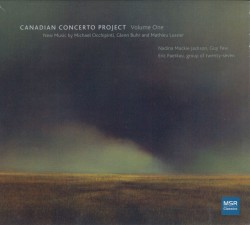 The group of twenty-seven, founded several years ago by Eric Paetkau who previously served as resident conductor with Les Violons du Roy in Québec, is a Toronto-based chamber ensemble which draws on some of this city’s finest musicians, including members of the Toronto Symphony and Canadian Opera Company orchestras, and soloists from across the country. g27’s latest release – Canadian Concerto Project Volume One (MSR Classics MS 1480 msrcd.com) – features bassoonist Nadina Mackie Jackson and trumpeter Guy Few in solo roles performing new works by Mathieu Lussier, Michael Occhipinti and Glenn Buhr. Lussier, himself an accomplished bassoonist, contributes two concertante works for that instrument which Mackie Jackson performs with flare and grace, as well as Impressions de l’Alameda for trumpet and strings. It is this three-movement Spanish-flavoured work which opens the disc, setting the stage for the lush and lyrical music which pervades the CD. Guy Few is impeccable here and in Occhipinti’s two contributions and Buhr’s and man will only grieve if he believes the sun stands still for corno, bassoon and strings. Buhr’s piece has enjoyed a number of settings, originally written as an aria for the opera Anna’s Dream Play and now existing in a variety of vocal and instrumental settings. The current version comprises the second movement of a concerto written at Mackie Jackson’s request and I only wonder why we are not treated to the other movements on this disc. Although Occhipinti’s Thirteen Seconds is billed as being for trumpet, bassoon, guitar and string orchestra it is the wind instruments which dominate while the guitar simply adds texture to the strings. Like most of the works on this disc the music is flowing and melodic and the same is true of his Sicilian Proverbs, which with its lilting geographically inspired rhythms brings the disc full circle. I look forward to Volume Two.
The group of twenty-seven, founded several years ago by Eric Paetkau who previously served as resident conductor with Les Violons du Roy in Québec, is a Toronto-based chamber ensemble which draws on some of this city’s finest musicians, including members of the Toronto Symphony and Canadian Opera Company orchestras, and soloists from across the country. g27’s latest release – Canadian Concerto Project Volume One (MSR Classics MS 1480 msrcd.com) – features bassoonist Nadina Mackie Jackson and trumpeter Guy Few in solo roles performing new works by Mathieu Lussier, Michael Occhipinti and Glenn Buhr. Lussier, himself an accomplished bassoonist, contributes two concertante works for that instrument which Mackie Jackson performs with flare and grace, as well as Impressions de l’Alameda for trumpet and strings. It is this three-movement Spanish-flavoured work which opens the disc, setting the stage for the lush and lyrical music which pervades the CD. Guy Few is impeccable here and in Occhipinti’s two contributions and Buhr’s and man will only grieve if he believes the sun stands still for corno, bassoon and strings. Buhr’s piece has enjoyed a number of settings, originally written as an aria for the opera Anna’s Dream Play and now existing in a variety of vocal and instrumental settings. The current version comprises the second movement of a concerto written at Mackie Jackson’s request and I only wonder why we are not treated to the other movements on this disc. Although Occhipinti’s Thirteen Seconds is billed as being for trumpet, bassoon, guitar and string orchestra it is the wind instruments which dominate while the guitar simply adds texture to the strings. Like most of the works on this disc the music is flowing and melodic and the same is true of his Sicilian Proverbs, which with its lilting geographically inspired rhythms brings the disc full circle. I look forward to Volume Two.
Concert notes: On February 7, group of twenty-seven presents “I’m Austrian-Canadian” with works by Aaron Gervais, Maya Badian, Jocelyn Morlock, Haydn and Mozart featuring soloists Gregory Oh, piano, Ed Reifel, timpani and Mike Fedyshyn, trumpet at Trinity-St. Paul’s Centre. On February 16 Nadina Mackie Jackson and Guy Few will premiere Fort Coligny-L’épopé de la France Antartique, Mathieu Lussier’s double concerto for bassoon, trumpet and orchestra with Orchestra Toronto in a matinée performance at the Toronto Centre for the Arts. On February 17 another side of group of twenty-seven is revealed when the g2-7 recital series presents Bethany Bergman, violin, Amy Laing, cello, and Monique de Margerie, piano, in music by Ravel and Beethoven at Heliconian Hall.
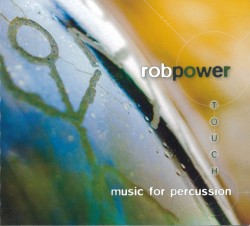 Speaking of lush recordings, there is a new disc from Newfoundland that I am quite enjoying. Rob Power’s Touch: Music for Percussion (robpower.ca) includes seven tracks of mostly warm and resonant music featuring mallet instruments. Power is joined by a number of accomplished musicians, several of whom have been active on the Toronto scene including John D.S. Adams (who contributes electronic treatments and co-produced the disc with Power) and Bill Brennan (who returned to his native Newfoundland a few years ago after being a member of the Evergreen Club Contemporary Gamelan for nearly 20 years). All of the tracks were composed by Power since 2000 with the exception of Shards which is a collaborative composition with Adams, Brennan, Kevin Coady and Erin Donovan featuring glass triangles, shakers, a djembe and electronic pitch modulation. This pointillistic piece is an exception to the overall lushness of the disc, although there are percussive bursts and moments of stillness interspersed throughout, especially in the final solo track which features Power on congas, bongos, gongs, temple bowls, triangles and the like in a piece written for New Brunswick percussionist D’Arcy Gray (who was recently in Toronto performing with Motion Ensemble at the Music Gallery). While the overall sensibility of the music presented here might be classified Minimalist with its use of ostinato and “friendly” harmonic writing, there is actually a wide spectrum of musical thought on offer, including extensive exploration of unpitched sounds as well. A number of the works received their premiere performances at the biennial Sound Symposium in St. John’s and two are dedicated to the memory of iconic figures associated with that festival, John Wyre and Don Wherry. The disc was recorded at the Memorial University School of Music, where Power is associate professor of percussion and directs the Scruncheons Percussion Ensemble.
Speaking of lush recordings, there is a new disc from Newfoundland that I am quite enjoying. Rob Power’s Touch: Music for Percussion (robpower.ca) includes seven tracks of mostly warm and resonant music featuring mallet instruments. Power is joined by a number of accomplished musicians, several of whom have been active on the Toronto scene including John D.S. Adams (who contributes electronic treatments and co-produced the disc with Power) and Bill Brennan (who returned to his native Newfoundland a few years ago after being a member of the Evergreen Club Contemporary Gamelan for nearly 20 years). All of the tracks were composed by Power since 2000 with the exception of Shards which is a collaborative composition with Adams, Brennan, Kevin Coady and Erin Donovan featuring glass triangles, shakers, a djembe and electronic pitch modulation. This pointillistic piece is an exception to the overall lushness of the disc, although there are percussive bursts and moments of stillness interspersed throughout, especially in the final solo track which features Power on congas, bongos, gongs, temple bowls, triangles and the like in a piece written for New Brunswick percussionist D’Arcy Gray (who was recently in Toronto performing with Motion Ensemble at the Music Gallery). While the overall sensibility of the music presented here might be classified Minimalist with its use of ostinato and “friendly” harmonic writing, there is actually a wide spectrum of musical thought on offer, including extensive exploration of unpitched sounds as well. A number of the works received their premiere performances at the biennial Sound Symposium in St. John’s and two are dedicated to the memory of iconic figures associated with that festival, John Wyre and Don Wherry. The disc was recorded at the Memorial University School of Music, where Power is associate professor of percussion and directs the Scruncheons Percussion Ensemble.
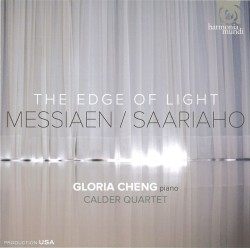 I was pleased and intrigued to receive The Edge of Light (harmonia mundi HMU 907578) featuring pianist Gloria Cheng and the Calder Quartet. The disc juxtaposes the early piano Préludes of Olivier Messiaen (1929) and his final work, Pièce pour piano et quatuor à cordes (1991) with two works for solo piano, Prélude (2006) and Ballade (2005), and the piano trio Je sens un deuxième coeur (2003) by Kaija Saariaho.
I was pleased and intrigued to receive The Edge of Light (harmonia mundi HMU 907578) featuring pianist Gloria Cheng and the Calder Quartet. The disc juxtaposes the early piano Préludes of Olivier Messiaen (1929) and his final work, Pièce pour piano et quatuor à cordes (1991) with two works for solo piano, Prélude (2006) and Ballade (2005), and the piano trio Je sens un deuxième coeur (2003) by Kaija Saariaho.
Messiaen wrote a wealth of solo piano music, much of it based on his extensive and exacting transcriptions of bird songs, most notably the seven-volume Catalogue d’Oiseaux (1956-58) – indeed Wikipedia identifies him as a French composer, organist and ornithologist – so it is of interest that the first of the preludes, his first acknowledged works, is entitled Le Colombe (The Dove). The set is more reminiscent of the placid and exotic world of Debussy than of the exuberant ecstasy of the Messiaen we would come to know in later years but there are certainly moments that foreshadow things to come. Of greater interest to me however is the piano quintet movement written for the 90th birthday of his publisher Alfred Schlee at Universal Edition. Although only three and half minutes in length, this quintet is particularly significant not only as Messiaen’s last work, but as his only work for a chamber ensemble written after the iconic Quatuor pour la fin du temps, which he wrote for the resources available to him (violin, clarinet, piano and a cello with only three strings) while interned at a German prisoner-of-war camp in Silesia (1940-41). Pièce is divided into 14 very brief contrasting sections mostly alternating between angular un peu vif unisons in the strings with bien modéré piano phrases. The exception is a longish passage in the middle where strings and piano join forces in a chattery depiction of a fauvette des jardins (Garden Warbler), thus confirming that Messiaen maintained his passion for birds right up to the very end.
Saariaho’s solo piano pieces are darker and more sombre than Messiaen’s but, to my way of thinking, do fall into the French tradition, at least if we consider Chopin and his influence to be an integral part of that history. Cheng gives us the first recordings of these two works. On the other hand, the trio for viola, cello and piano – a darker variant of the traditional piano trio – has appeared on at least two previous recordings, including one featuring Toronto violist Steven Dann, cellist Annsi Karttunen and pianist Tuija Hakkila reviewed in this column in November 2012. At that time I mentioned that Je sens un deuxième coeur was based on themes from Saariaho’s second opera Adriana Mater but noted that it is “an effective chamber work not dependent on the programmatic inspiration for appreciation.” In the notes to the current recording famed opera director Peter Sellars paints a different picture: “We are in a country that is on the verge of war. […] a young woman dares to step out onto her small balcony dreaming of freedom, of liberation, and of pleasure, to sing “I unveil my skin.” The gesture of unveiling is provocative but innocent […] This intensely personal song is the opening of the opera, and forms the content of the first movement.” He goes on to describe the “impetuous music of rising danger” depicting an abusive boyfriend at the door in the second movement. In the third her sister dreams that war breaks out and “imagines the surreal atrocity that transforms a city at war.” In the anguished fourth movement war actually does break out and the drunken boyfriend batters down the door and rapes her. The final movement, “I feel a second heart beating next to mine,” provides the musical image of the double heartbeat of a woman carrying a child which Sellars calls “one of the most poignant and satisfying moments in the history of music.” Perhaps the programmatic nature of the work does benefit from the telling… All in all this is an important release on a number of counts, not the least of which is its excellent sound quality and high performance standards.
We welcome your feedback and invite submissions. CDs and comments should be sent to: The WholeNote, Centre for Social Innovation, 503 – 720 Bathurst St. Toronto ON M5S 2R4. We also encourage you to visit our website thewholenote.com where you can find added features including direct links to performers, composers and record labels, “buy buttons” for online shopping and additional, expanded and archival reviews.
David Olds, DISCoveries Editor
discoveries@thewholenote.com
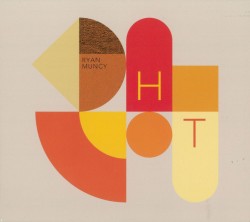 Hot
Hot 

